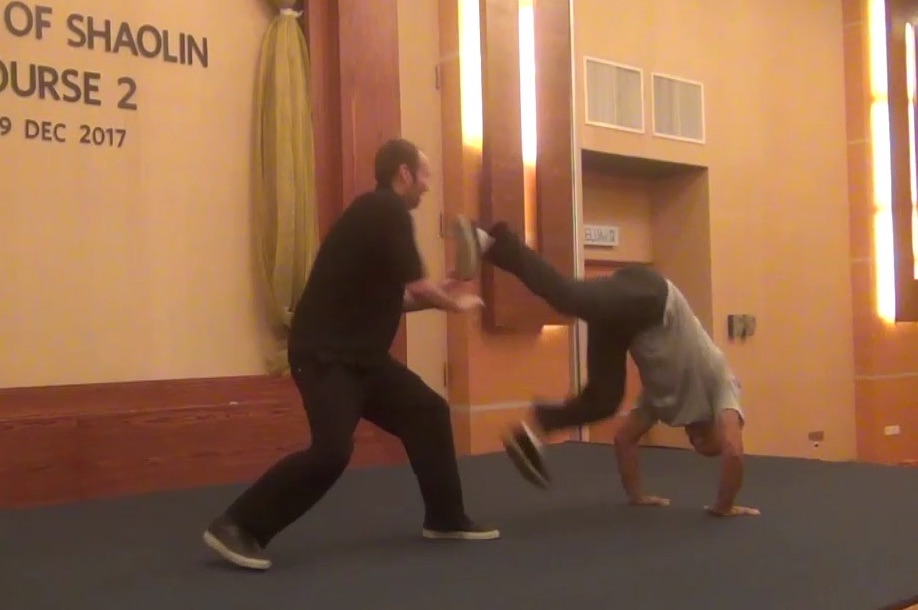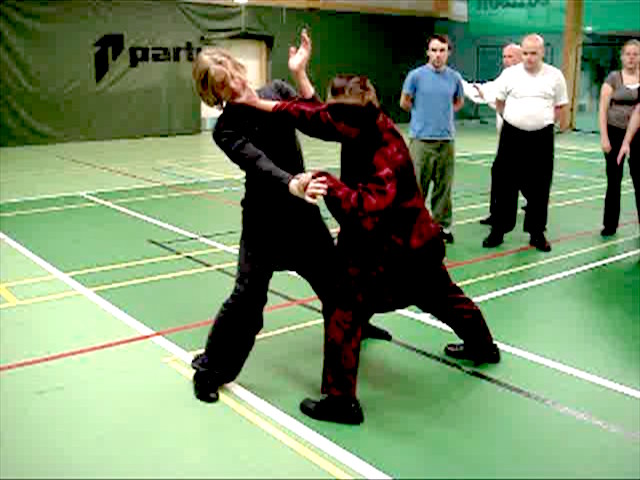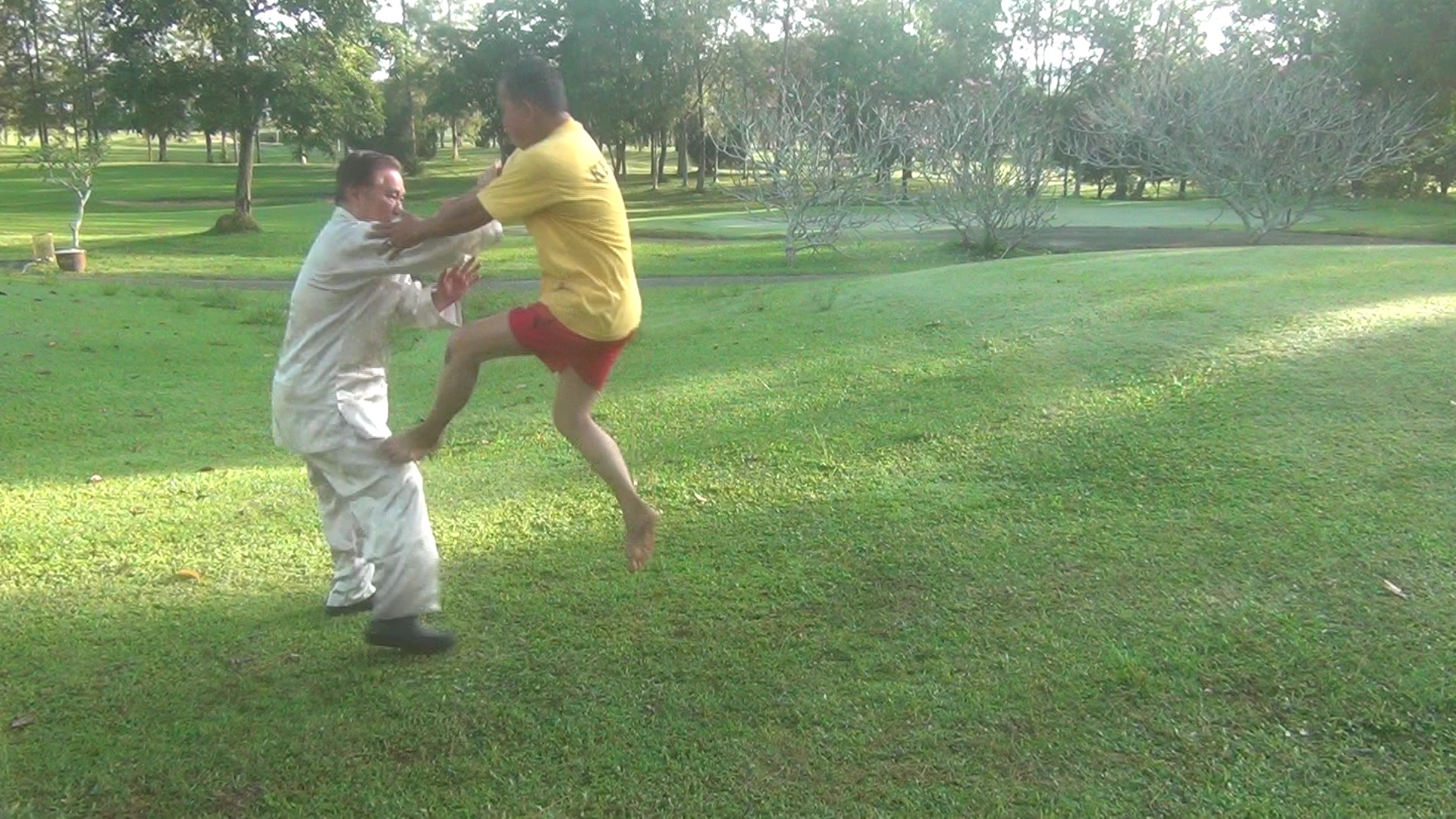SELECTION OF QUESTIONS AND ANSWERS
FEBRUARY 2019 PART 1

The Essence of Shaolin course was held in December 2017, but questions and answers on the course were posted much later
Question 1
I see that answers in your Q&A are about courses in your school more than one year ago. Does that make the answers out of date?
— Edward, USA
Answer
No, the answers are still valid.
Questions were asked more than a year ago but I post the questions and answers later because I have a very long waiting list of questions and answers. The waiting list is now more than a year. Although the answers were posted later in my Questions and Answers Series, I posted my replies in e-mails immediately to those who asked questions.
Only questions that are not dependent on time factor, are posted later. Topical questions are posted immediately. I have to make some adjustment in my Questions and Answers Series by replacing non-topical questions with topical questions.
Question 2
I also see that some of your questions are from instructors of your school whereas in the past the questions were from outsiders. Was there a change of the way you answer questions?
Answer
My Questions and Answers Series were inspired by a kungfu master, Sifu Lee Yin Eang, who answered questions from the public in a monthly Chinese kungfu magazine, "The New Hero". The magazine is now no longer in publication.
At first I answered questions from the public who sent me e-mails. Later I felt that I had a greater responsibility to my students than to outsiders. Many students asked me questions during my courses, and I answered them on the spot. Some of them wrote to me, and I answered by e-mails. When their questions are interesting and apply to many other students, I post them on my Questions and Answers Series. If their questions are topical, I post the answers immediately; if they are not topical, I post them later, sometimes a year later.
I still maintain the original aim of the Questions and Answers Series, i.e. to answer questions from the public. Similarly, if the questions from outsiders are topical, I post the answers very soon; if they are not topical, I post them later, now more than a year later. But I always reply to them by e-mails immediately. I am happy to say that I have replied to every question if enquirers follow the conditions required, i.e. stating their names or pen-names, their countries and the source from where they have access to me.
Many important questions concerning chi kung, kungfu and meditation were answered in the early years of my Questions and Answers Series. It is certainly worthwhile to read some of the past issues.
Some Shaolin Wahnam students have asked me how I could answer questions so fast besides teaching and doing many other things. The reason is that practicing our arts in Shaolin Wahnam has made me very cost-effective.

Applying combat sequences is the base of kungfu sparring
Question 3
Does this mean that we should also exclude from our regular classes all other material taught at Shaolin Wahnam courses than what is written in the syllabus?
— Sifu Markus Kahila, Shaolin Wahnam Finland
Answer
Yes, you should exclude from the regular classes all other materials taught at Shaolin Wahnam courses than what is written in the syllabus.
I teach elective subjects while Shaolin Wahnam instructors teach the main course, with emphasis on the Shaolin 16 combat sequences and Taijiquan 12 combat sequences in regular classes.
The main course gives depth, while elective courses give breadth. The main course is focused on practicing, and elective courses in learning. Students at elective courses must spread out what they have learned in a few days to many months.
Question 4
For example, there is no mention of kungfu against other styles in our Shaolin Kungfu and Taijiquan syllabuses, so should we leave it out from our regular teaching?
Answer
Yes, leave out the other martial art styles from the main Shaolin and Taijiquan syllabuses.
In regular classes, instructors should teach Shaolin Kungfu or Taijiquan; they should not teach other styles of martial arts. Students should be able to apply their kungfu for combat, and have good health, vitality, longevity, peak performance and spiritual joys as a result of their kungfu training. They will also be able to apply what they have learned in kungfu lessons to enrich their daily lives.
Once they can apply their kungfu skills and techniques flowingly, they can defeat opponents of other martial arts of similar levels, because most other martial artists do not know what to do when they are attacked with kungfu forms.
Internal force training in our school is sophisticated, and many other material artists will find it hard to spar with our students. Our students can spar for a few hours without panting for breadths or being tired. Most other martial artists will be panting for breadths and tired in half an hour.

Asking Bridge gives us much breadth in kungfu combat
Question 5
Furthermore, over the years we've learned a lot of special arts from you not found in the syllabus, such as asking bridge and special sets. Should we keep these only to ourselves, and not teach them to our students?
Answer
Yes, keep the special arts to yourselves and your advanced students who attended the special classes. You should not teach these special arts to students in your regular classes.
Special arts, like Asking Bridges and special sets, are elective. Other electives include Cosmos Palm, Cotton Palm, Golden Bell, Thousand Steps, no-shadow kicks, chin-na, dim-mark, soft-whip, big trident, crescent-moon spear, and many others.
In regular classes, students learn basic stances, footwork, exploding force, combat sequences, single against multiple unarmed, and single against multiple armed. The Shaolin syllabus is found here and the Taijiquan syllabus is found here.
I am glad that many instructors and students attended the recent Becoming a Shaolin Wahnam Kungfu Practitioner Course, which gives a good picture what a Shaolin or Taijiquan practitioner is like. Others who did not attend the course, will have to wait for the next time I shall offer it.
Question 6
Could we teach kungfu against other styles like kickboxing, wrestling or karate at our regular classes?
I asked because I have found this training against other styles very beneficial for myself and for my students.
Answer
You should not teach using kungfu against other styles like kickboxing, wrestling or karate in your regular class. You should teach the basic combat sequences in Shaolin Kungfu and in Taijiquan.
When our students can apply their combat sequences well, they can use them on other styles, like kickboxing, wrestling or karate. Kickboxing, wrestling and karate, as well as boxing, judo, aikido, muay thai and taekwondo are modifications of kungfu techniques, but without proper coverage and are well protected by safety rules.
Indeed, if your students can use kungfu flowingly, other martial artists of a similar level will have no chance to use their styles against your students. This, in fact, is what we ask our students to do.

Grandmaster Wong using Shaolin Kungfu against Muay Thai attacks
Question 7
The sequence "Tiger Leans on Wooden Door" and the sequence "Hook Hands" are similar to "Hungry Tiger Catches Goat". Is the difference in application like how you apply the techniques? Using "Hungry Tiger Catches Goat" seems more forceful whereas using for example "Tiger Leans on Wooden Door" seems more subtle. Is this correct?
— Sifu Roeland Dijkema, Shaolin Wahnam Netherlands
Answer
All the three combat sequences, "Tiger Leans on Wooden Door", "Continuous Hook Hands", and "Hungry Tiger Pulls Goat" are different.
In "Tiger Leans on Wooden Door", you use two tiger-claws to confuse an opponent. You can counter with your left or your right tiger-claw.
In "Continuous Hook Hands", you grip the throat or the upper arm of an opponent.
In "Hungry Tiger Catches Goat", you brush off an opponent's attack with one tiger-claw and simultaneously attack him with the other tiger-claw.
The difference is not how forceful or sublte you use the techniques. Any one of the techniques can be used more forcefully or less forcefully. "Tiger Leans on Wooden Door" or "Continuous Hook Hands", for example, can be more forceful than "Hungry Tiger Catches Goat".
The difference is also not on subtlety. Any one of the techniques can be more or less subtle than another. "Hungry Tiger Catches Goat", for example, can be more subtle than "Tiger Leans on Wooden Door".
Question 8
The Muscle level and the Bone Marrow level of Bone Marrow Cleansing are very powerful. Can they be practiced every day but at a low level, for instance by not going into a Chi Kung State of mind?
Answer
Over-training depends on depth, and not on breath.
You can practice at a low level both at the muscle level and at the bone marrow level, and not over-train. On the other hand, you can practice at a high level either the muscle level or the bone marrow level, and over-train.
To answer your question directly, of course the muscle level and the bone marrow level can be practiced every day at a low level.
What constitutes a low level? It varies from person to person, and from time to time of the same person.
LINKS
Selected Reading
- Strategies, Skills and Techniques to Beat a Boxer
- Intensive Courses and Special Courses
- Breathing Structures
- Kungfu against Muay Thai
- Shaolin Kungfu against Wrestling
